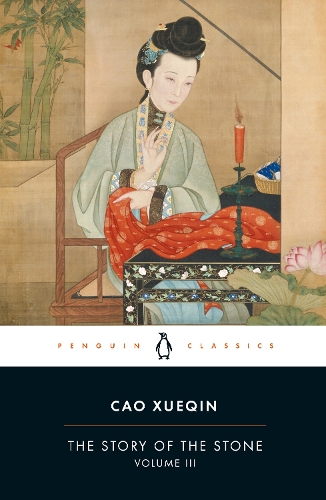
The Story of the Stone
(Paperback, 3rd edition)
Available Formats
Paperback, 2nd edition
Published: 1st September 1982
Paperback, 3rd edition
Published: 1st April 1981
Paperback
Published: 1st December 1976
Hardback
Published: 17th March 2021
Paperback, 4th edition
Published: 30th March 2006
Paperback, 5th edition
Published: 30th March 2006
Publishing Details
The Story of the Stone
By (Author) Cao Xueqin
Penguin Books Ltd
Penguin Classics
1st April 1981
25th September 1980
3rd edition
United Kingdom
Classifications
General
Fiction
Fiction in translation
895.1
Physical Properties
Paperback
640
Width 129mm, Height 198mm, Spine 37mm
467g
Description
The Story of the Stone (c. 1760), also known by the title of The Dream of the Red Chamber, is the great novel of manners in Chinese literature. Divided into five volumes, of which The Warning Voice is the third, it charts the glory and decline of the illustrious Jia family (a story which closely accords with the fortunes of the author's own family). The two main characters, Bao-yu and Dai-yu, are set against a rich tapestry of humour, realistic detail and delicate poetry, which accurately reflects the ritualized hurly-burly of Chinese family life. But over and above the novel hangs the constant reminder that there is another plane of existence a theme which affirms the Buddhist belief in a supernatural scheme of things.
Reviews
Filled with classical allusions, multilayered wordplay, and delightful poetry, Caos novel is a testament to what Chinese literature was capable of. Readers of English are fortunate to have David Hawkes and John MinfordsThe Story of the Stone, which distills a lifetime of scholarship and reading into what is probably the finest work of Chinese-to-English literary translation yet produced. You will berewarded every bit of attention you give it, many times over. SupChina, The 100 China Books You Have to Read, Ranked (#1)
Author Bio
Cao Xueqin (Ts'ao Hsueh-ch'in) ca. 1715-1763 Cao is considered to be China's greatest novelist, but little is known of his life. An unconventional, versatile man, he came from an eminent and wealthy family which suffered a reversal of fortune in 1728 after the death of the Kangxi Emperor and a power struggle between his sons. Cao seems to have spent about ten years writing and revising his novel, from roughly 1740 to 1750, but the last 40 of the 120 chapters were completed by a different author, probably after his death. He also worked for a period of time in the Imperial Clan's school for the children of the nobility and bannermen, but eventually settled in the countryside west of Peking. He earned some money by selling his own paintings, but his family seems to have been perpetually in poverty.
